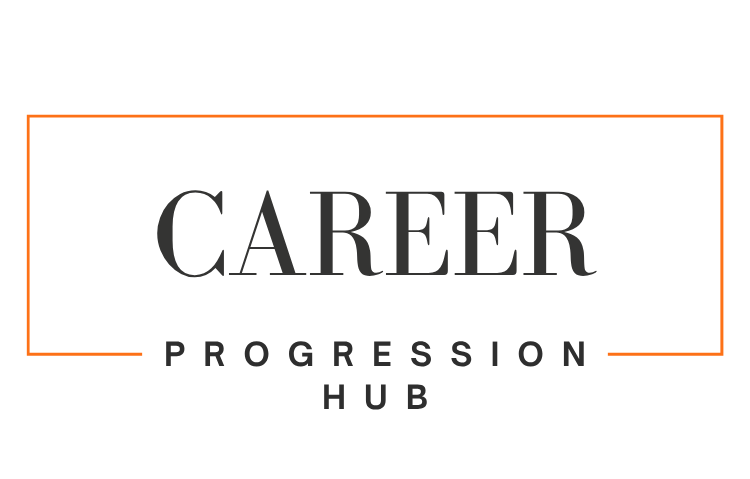Career Progression Hub
London, UK
Your career path isn’t a straight line – it’s a reflection of your strengths, values, and how you want to shape the world.
The Career Choice Dilemma
Ever feel like you’re being forced to pick between ‘serious grown-up job‘ and ‘starving artist‘? Like you’re standing at a fork in the road with a calculator in one hand and a sketchbook in the other, waiting for some wise career fairy to show up and say: ‘Go left, my child’?
Yeah. She’s not coming.
But here’s the twist – choosing between STEM and creative fields isn’t about destiny or locking yourself into one box forever. It’s about alignment. With your strengths. Your values. And the way you want to shape the world, at least for now.
The Case for STEM
STEM careers are often painted as the ‘safe’ option. And in some ways, they are:
- Structure: roles are grounded in logic, problem-solving, and clear progression.
- Demand: tech, engineering, data, biotech – industries can’t get enough of new talent.
- Stability: salaries tend to be solid, and advancement pathways well-marked.
The skills you’ll sharpen:
- Coding, modelling, and technical precision.
- Analytical thinking.
- Communicating complex ideas in simple ways (hugely underrated).
The journey often looks like:
- Software Developer → Senior Developer → Technical Lead → Engineering Manager → CTO
- Lab Technician → Research Associate → Scientist → Principal Investigator → R&D Director
It’s not always linear, but there are ladders to climb – and ladders can be comforting.
The Case for Creative Careers
On the flip side, the creative path is rarely neat. And that’s the point. Careers here are:
- Fluid: you might start freelancing, juggling projects, or trying different roles.
- Driven by expression: design, storytelling, performance – work that moves people.
- Competitive: yes, but barriers are cracking open thanks to digital platforms.
The skills you’ll sharpen:
- Creativity with a practical edge.
- Storytelling and audience connection.
- Adaptability in fast-changing spaces (algorithms, trends, platforms).
The journey often looks like:
- Graphic Designer → Art Director → Creative Director → Head of Brand → Chief Creative Officer
- Copywriter → Content Strategist → Editor → Communications Lead → Director of Marketing
Progress isn’t measured by job titles alone. Sometimes it’s creative freedom, audience reach, or building a personal brand that matters most.
Where They Overlap (and Why That’s Exciting)
Here’s the part no one tells you: the border between STEM and creativity is dissolving.
- UX designers mix logic with empathy.
- Data visualisation turns numbers into art.
- AI is reshaping creative work daily.
The best problem-solvers are rarely only logical or only imaginative. They’re both.
Translation: you don’t have to pick a side forever.
The Questions That Actually Help
Instead of asking ‘Which career is better?’, try asking:
- What kind of problems light me up – technical, human, or aesthetic?
- Do I prefer structure, or do I thrive in ambiguity?
- Am I motivated by security, freedom, innovation, or impact?
- How comfortable am I with risk – like freelancing or unstructured progression?
Your answers may point you toward one side – or somewhere deliciously in the middle.
The Myths Worth Ditching
- Creative fields are less stable. Stability is built, not given. Diversify your skills, and you’ll find footing.
- STEM is only for maths or science lovers. Nope. Many roles rely on communication, design thinking, or user experience.
- You have to choose once, forever. Absolutely not. Careers evolve. You can pivot. Hybrid roles exist.
Practical Tips for Beginners
Here’s what actually helps when you’re just starting out:
- Try internships or short projects in both areas.
- Build a cross-skill toolkit – coding, writing, design, analytics.
- Make a portfolio (yes, even in STEM). Show your projects, not just your CV.
- Talk to real people in the field. Ask them what they actually do all day.
Final Thoughts: Non-Linear Truth
There isn’t a single right turn here. Just the one that fits who you are right now.
STEM offers structure and clarity. Creative fields offer freedom and expression. Both can give you a career full of meaning, challenge, and growth.
So if you’re staring at that fork in the road, calculator in one hand, sketchbook in the other? Take a step. You can always pivot later. The only wrong move is standing still.







